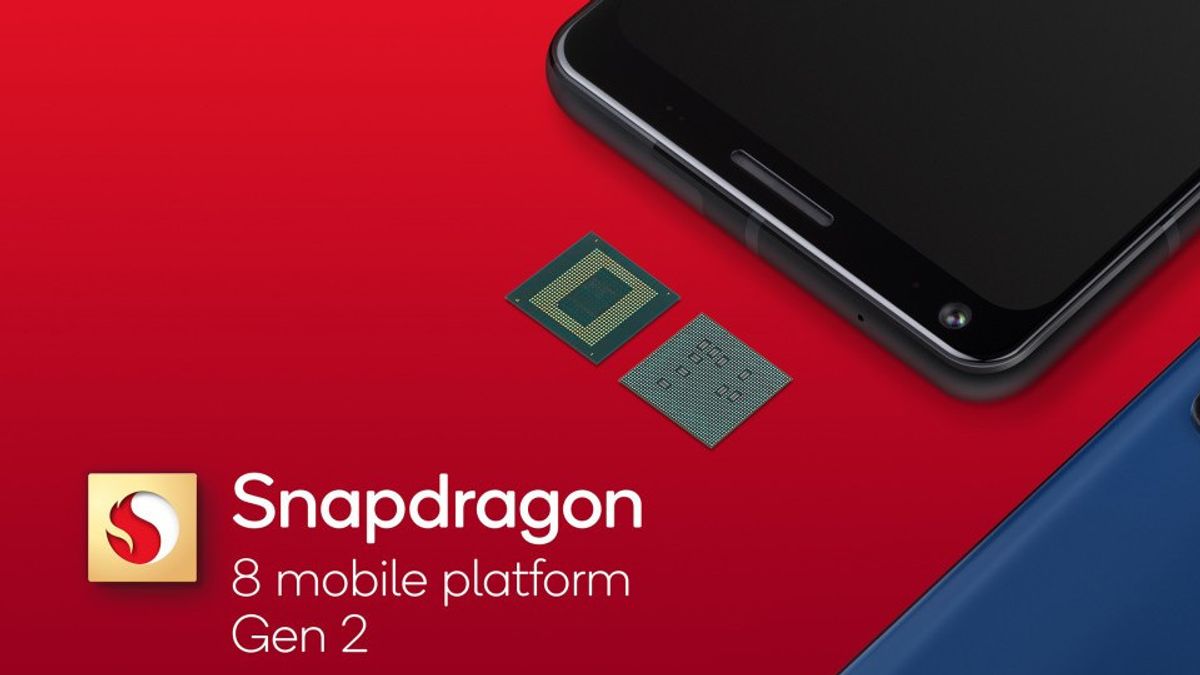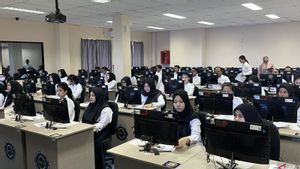JAKARTA - Qualcomm has just released a System on Chip (SoC) for Android phones, Snapdragon 8 Gen 2. The company brings performance that is further enhanced in all Gen 2 lines compared to the Gen 1 model.
In addition to newer cores, better, the big news is the addition of WiFi 7 support so that users can get faster connectivity, provided the brand also uses advanced routers.
Qualcomm has several claims for the new chip, for that below a brief review of the Snapdragon 8 Gen 2 quoted from various sources, Thursday, November 17.
UPgraded CPUs and GPUs
The company has long focused on power efficiency, and now with the presence of the new chip Qualcomm is proving it again by new Kryo CPU Trio, delivering up to 35 percent higher performance with up to 40 percent better efficiency.
The clock speed is the same as the Snapdragon 8 Gen 1, but the core composition is not. It's a 4 nm chip that contains four different CPU cores, all designed by Arm.
The main point is the Arm Cortex X3 3.2 GHz then there are three Cortex A710 CPUs to perform medium tasks and four A510 CPUs for low-background processing.
The reason Qualcomm puts a pair of A710 into the mix is probably 32-bit support. But given that the 32-bit app alone is most likely an app designed for older Android smartphones, it doesn't make sense to ask for two special performance cores that are basically only available to allow 32-bit support.
In addition, the Snapdragon 8 Gen 2 also brings support for new, faster memory technology. RAM works with LP-DDR5X up to 4,200MHz, while storage can use a new UFS 4.0 format.
Qualcomm did not share many GPU-related improvements, but because he used the latest Adreno GPU, it promises performance of up to 25 percent higher with power efficiency of up to 45 percent higher. There is also ray-tracing support available for more real reflection and shadowing. In fact, this GPU is the first to support 1.3 (together with OpenGL ES 3.2).
Lastly, AV1 support for 8K 60 FPS is also available on Snapdragon 8 Gen 2. Companies like YouTube and Netflix have been pushing it for a long time as VP9 successors, and with wider adoption in the mobile ecosystem, it's likely that more services will use it in the future.
Camera Becomes Fiscal
Like its predecessor, the Snapdragon 8 Gen 2 presents a triple 18-bit ISP that can handle up to three 36MP (30fps) cameras simultaneously or up to 200PM for one camera. The 108MP sensor is powered by zero shutter lag.
For videos, chipsets can record 8K HDR recordings at 30fps and take 64MP photos simultaneously, 4K at 120fps and also perform slow motion videos (720p at 960fps). This supports several HDR formats including HDR10+, HLG and Dolby Vision. Using a DOL sensor, it can capture up to four exposures for each video frame.
WiFi Support 7
With this new chipset, the company upgraded to the new Snapdragon X70 modem, supporting mmWave and sub-6GHz 5G. The top downlink speed is 10Gbps, the peak uplink is 3.5Gbps similar to its predecessor.
This modem supports Dual-SIM, Dual-Active (DSDA) operations where two 5G SIMs (or 5G+4G) can be activated simultaneously.
Local connectivity presents the upcoming WiFi 7 feature (802.11be), thanks to the new FastConnect 7800 system. It excels at 5.8Gbps up from 3.6Gbps on the previous chip. In addition to speed, this new standard also lowers latency.
Present AI
This time Qualcomm carries the Hexagon Direct Link, allowing various parts of the SoC (including Spectra ISP) to interact directly with the DSP Hexagon and its neural networks. This improves performance and latency for counting, which in turn will lead to improved photo-taking capabilities.
Mobile Equipped by Snapdragon 8 Gen 2
Qualcomm said that the first device powered by Snapdragon 8 Gen 2 will arrive at the end of 2022. It is claimed to be adopted by a large Android phone maker. In its press release, there is a list of its companies Asus ROG, Honor, iQOO, Motorola, nubia, OnePlus, Oppo, Red Magic, Sharp, Sony, Vivo, Xiaomi, Meizu and ZTE.
The English, Chinese, Japanese, Arabic, and French versions are automatically generated by the AI. So there may still be inaccuracies in translating, please always see Indonesian as our main language. (system supported by DigitalSiber.id)









